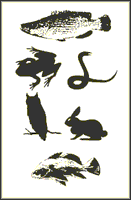Nebraska Cooperative Fish and Wildlife Research Unit

Nebraska Cooperative Fish and Wildlife Research Unit: Staff Publications
Date of this Version
12-13-2017
Citation
Wszola LS, Simonsen VL, Stuber EF, Gillespie CR, Messinger LN, Decker KL, et al. (2017) Translating statistical species-habitat models to interactive decision support tools. PLoS ONE 12(12): e0188244. https://doi.org/10.1371/ journal.pone.0188244
Abstract
Understanding species-habitat relationships is vital to successful conservation, but the tools used to communicate species-habitat relationships are often poorly suited to the information needs of conservation practitioners. Here we present a novel method for translating a statistical species-habitat model, a regression analysis relating ring-necked pheasant abundance to landcover, into an interactive online tool. The Pheasant Habitat Simulator combines the analytical power of the R programming environment with the user-friendly Shiny web interface to create an online platform in which wildlife professionals can explore the effects of variation in local landcover on relative pheasant habitat suitability within spatial scales relevant to individual wildlife managers. Our tool allows users to virtually manipulate the landcover composition of a simulated space to explore how changes in landcover may affect pheasant relative habitat suitability, and guides users through the economic tradeoffs of landscape changes. We offer suggestions for development of similar interactive applications and demonstrate their potential as innovative science delivery tools for diverse professional and public audiences
Included in
Aquaculture and Fisheries Commons, Environmental Indicators and Impact Assessment Commons, Environmental Monitoring Commons, Natural Resource Economics Commons, Natural Resources and Conservation Commons, Water Resource Management Commons


Comments
This is an open access article, free of all copyright